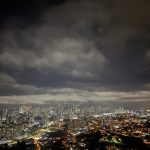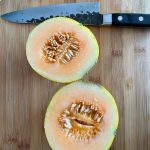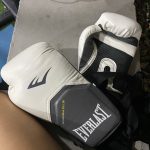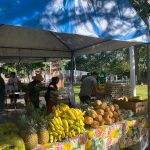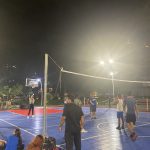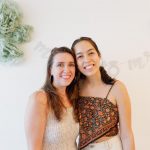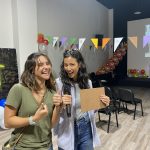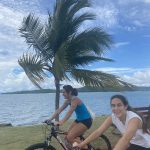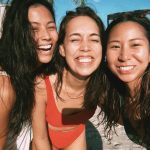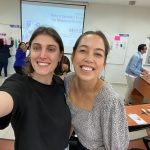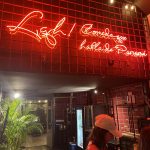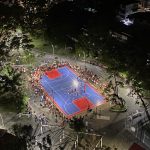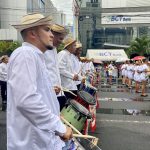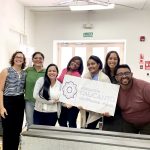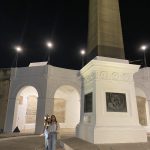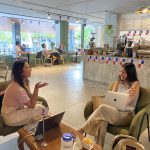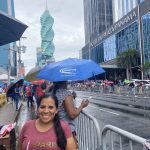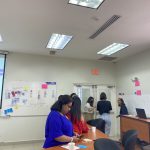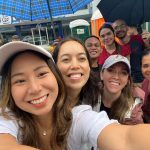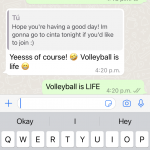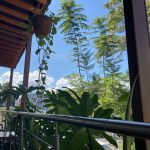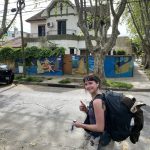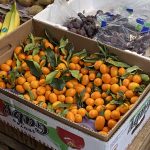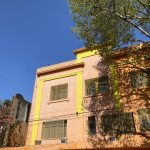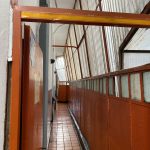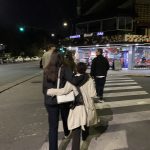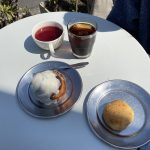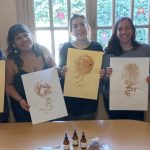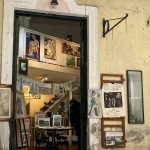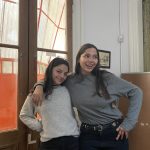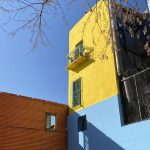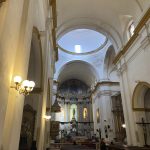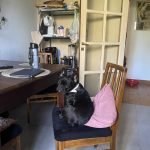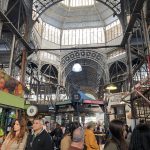
Hudson’s proposal
Hi everyone! These two weeks have been the best two weeks of my life. That is not because everything was perfect or joyful, there was a lot of sadness, stress, and anxiety. All of the emotions created the most growth since I arrived in Cape town. This week started off with picking up a rental car. I have wanted to explore beyond Cape town, but it is very expensive to Uber, so renting a car was a good option. I was better at driving on the other side of the car and another side of the road than I thought. It was a fun challenge. Then I picked Hudson up from the airport. We immediately went up the west coast. We stopped at every beach we could to enjoy the different views. The best part of the drive was the West Coast Natural Reserve; the water was like the Caribbean and the sand was like siesta key beach. Then, the next highlight was that Hudson purposed! It was such an amazing surprise!

I’m standing on an ostrich egg
As we made it back down the west coast we stopped at an ostrich farm and got to hold a baby ostrich. Did you know that the eggshell is strong enough to stand on it? and they eat the eggshell (which is like glass) for calcium.

Cape Point
The week of November 20th was finals, so while the kids were testing their knowledge, we gained more knowledge about cape town by exploring. We drove down to Cape of Good Hope and Cape Point. It was a beautiful drive down the coast. Cape Point is one of the most southern tips of Africa. Then we went to the Castle of Good Hope, a castle built by the Dutch in the 17th century to protect Cape town from being taken from other countries, later to fall to the British.

Sunset in Hermanus (also where we saw whales breaching)
Then we went down the South East Coast to Hermanus. Wow! Beautiful and not what I was expecting. The drive included rolling hills with farmland, woodsy areas, and the beach. We made a stop at the Afrikaans Language Monument. It was built to represent that the Afrikaans language was a separate language from Dutch. Afrikaans includes a little bit of French, Dutch, German, Khios, and Portuguese. I actually visited the city where the first Afrikaans dictionary was published, Oudtshoorn.

The Afrikaans Language Monument
I loved introducing Hudson to my host family and school family. I was so nervous about bringing him to school, but I introduced him to the staff and students. Showed him how my school days usually run. Hudson commented how cool it is to see how I made a life in a different country all by myself. It made me feel really proud of myself.

7th grade prom
Also, as the school year is ending grade 7 had a prom (similar to the 8th grade formal). It was the first time I was a chaperone to a dance, but it was so fun watching the kids sing, dance, and laugh amongst each other. Since I have been here for so long, I get to experience big events throughout the school year.
Over the last two weeks, I have seen 33 different animals. The list includes crocodiles, baboons, alpacas, lamas, geese, camels, goats chickens, ostrich, tigers, elephants, cheetahs, peacocks, blue Crain (South Africa’s national bird), cows, horses, donkeys, sheep, dolphins and whales at outreaches or farms and mountain zebra, eland, lion, wildebeest, springbok, impala, kudu, giraffe, waterbuck, snakes, elephant, buffalo and rhino on the safari.

Petting a cheetah at a cheetah outreach
Of those animals, my favorite was feeding the alpacas, lamas, and ostrich (which I enjoyed for dinner and I also got to sit on), petting a cheetah, receiving an elephant hug, and watching the lions feast on chickens after fasting for 2 days. The safari was incredible! It was like an adult scavenger hunt! Also, on the Garden Route and Safari trip, I went kayaking and explored caves. The smallest tunnel we crawled through was 11 inches in height!

Climbing through the caves
Other adventures included Sophia’s concert, which was so cute, and watching the Elton John Rocketman movie at an outdoor venue. We also have had a lot of birthdays, Sophia turned 3, Rozano turned 14 and Ronaldo turned 17! So lots of cake and braais! I want a braai for my next birthday!
In other news, this week was also very interesting. On Nov 21-22 there was a taxi strike. This shut down the city due to safety, so it was a day at home. Yonga was directly affected by this so she had to pull a double and caught the taxi before the strike started at 2:30 am, and came home at 12:30 am. Also, students take taxis to school, so no students were able to get to school.
As time has passed, I am getting more homesick. I miss the luxuries that we have such as air conditioning, feeling completely safe with my belongings (robbery), laundry machines, having my own room, and my parent’s hugs. Also, since going away for trips coming home hasn’t been the same. I have felt emotionally disrupted. I sometimes feel on edge about how much or how little I am eating, not having alone time because knocking doesn’t exist, and being self-conscious about how much water I use to shower or to do laundry. All silly things, but it is anxiety-provoking because I want to be respectful and not ask for much.
On another note, I have also learned a lot about townships. I learned that the people who live in the township are either unemployed or making less than 2,500 rand, which is the minimum wage in South Africa, ($147 per month). I also learned that people in the township are desperate to make money so they will cut down the power lines and burn the rubber off the lines and then sell the copper, which also increases the need for load shedding. They will steal the water faucets for the copper, license plates, car decals, and train tracks, which has caused a decrease in public trains. The biggest township in Cape Town, Khayelitsha (which means “new home”) houses 1.2 million people in a 10 square-mile radius, which is the number of people that live in Dallas, Texas. The government has recently started putting porta-potties on the outskirts to help with sanitation. I also learned that during election time, politicians go into townships and tell the people how they will help them, yet when they become in office they don’t do anything, leading to an increasing number of townships. Also, there are cattle and children that are completely unsupervised. As I have learned more about these living conditions it has weighed deeply on my heart. I feel helpless and fearful.
To leave you on a happier note, I have noticed, since Hudson arrived that I have picked up a colored mentality like yelling across the house, licking my plate at the end of dinner, and incorporating lingo like, “awwww mannnn.”
I hope this reaches you well and enjoyed the life update here in Cape Town!
Khuluma ngokushesha (talk soon in zulu, an African language)

Elephant hug at an Elephant outreach (I also fed the elephants and touched their tongue, it was similar to ours – soft and slobbery)





















